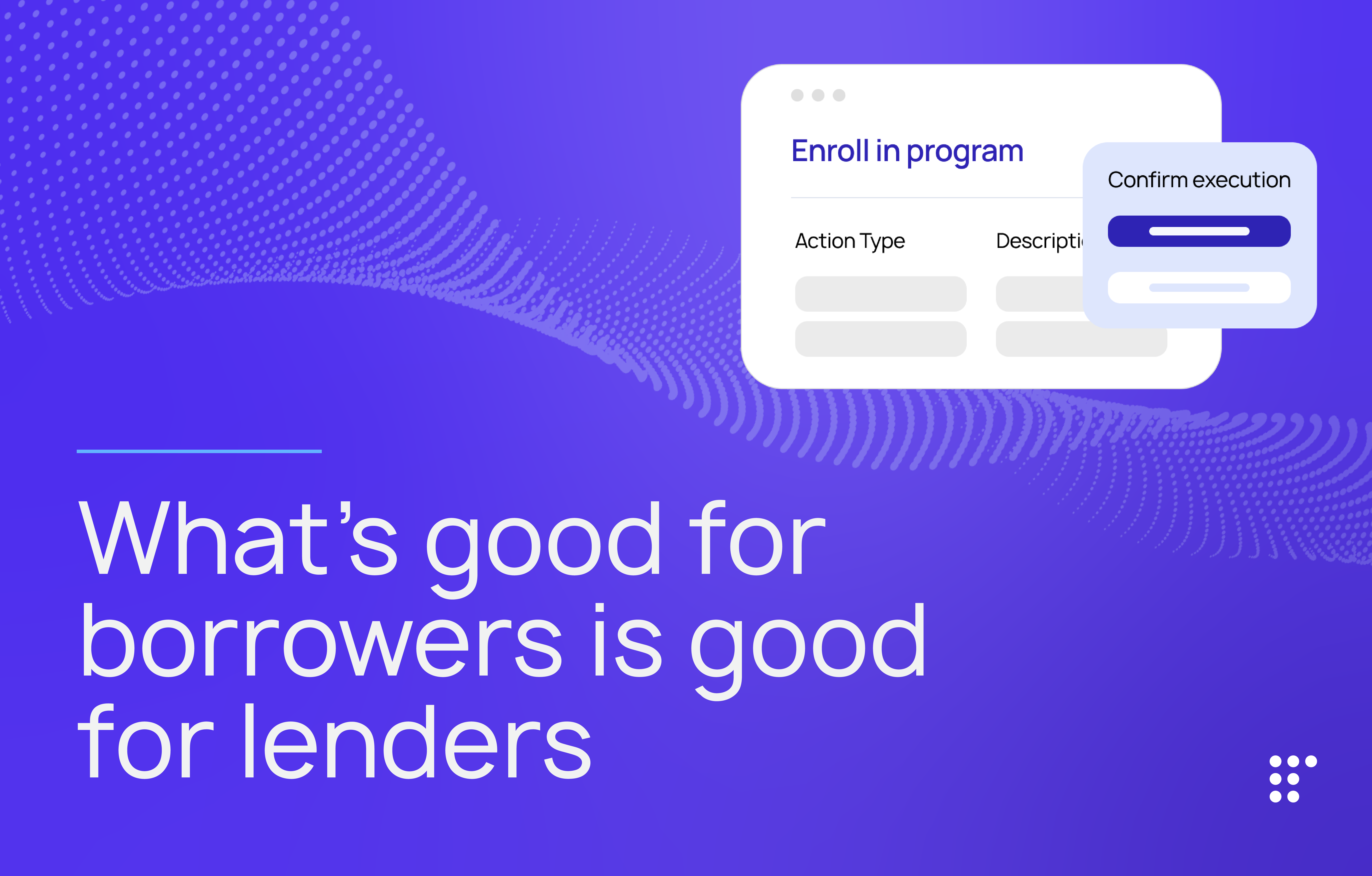Transaction-Level Credit: Powering Innovation at the Core of Credit Card Programs
In October 2023, LoanPro unveiled it’s new, patent-pending innovation—transaction-level credit. This article dives deep into the details how LoanPro’s transaction-level credit powers innovative credit card programs. To read our press release on this innovation, click here.
Credit cards have fought to differentiate themselves for decades. When they were first introduced, the primary consumer decision point was interest rate. Modern rewards programs were introduced in the 1980s, with the goal of attracting and retaining cardholders. And for more than four decades, rewards have been the name of the acquisition and retention game for card brands.
Since rewards were introduced, we’ve seen minor improvements to the timing of rewards points delivery, making them available as soon as a transaction clears rather than at the end of a billing cycle. Card programs also emphasize how easy it is to use their card. Now you can swipe, dip, or tap. And while these are things consumers definitely want, card products still aren’t very personal. Consumers proved the demand for more personalized products, choice, and a better experience every day with the choices they make. So, what can card companies, banks, or fintechs do to make a card experience personal and adaptable?
Enter transaction-level credit. This patent-pending innovation enables never-before-seen personalization for card programs. Transaction-level credit is not an add-on to existing programs. Rather, it’s innovation at the core of how programs work, a leap forward for cards that includes everything from a fully connected tech stack to a re-imagined, flexible credit ledger. Here are the primary pieces that make up transaction-level credit:
- The ability to categorize transactions based on the attributes of the transaction and other variables, like the merchant category, ZIP code, or time and amount of the transaction
- A configurable credit ledger where different financial mechanics (e.g. interest rate, interest abatement) can be specified for a single transaction or category of transactions
- Configurable transaction approvals or declines based on the business where a card was swiped, geolocation, category of goods or services purchased, online vs in-person purchases, transaction limits, and spend velocity
- Configurable billing cycles, minimum payments, grace periods, and finance charge calculation and compounding options
- The ability to roll a transaction or balance into a child installment loan that can be managed and paid down through the parent line
- A tech stack that connects, card network, card issuance, card controls, credit ledger, dispute management, statementing, and servicing and collections tools
- Strong CARD Act compliance
- A team that understands the technology, transaction mechanics, partnerships, and setup required to become a card program manager
This first-of-its-kind combination of components will lower the barrier to entry for new card programs and provide the ability to customize their programs, or even put the customization and control in the cardholder’s hands. Let’s take a look at what transaction-level credit enables.
Example #1
A single credit line offered to a family with multiple linked cards, one for each family member. Each card can be subject to different rules, like different spend or single transaction limits. Cards can also be restricted to specific purchases or purchase types. Maybe the family decides the youngest child should buy his own clothes, but shouldn’t be allowed to buy video games. So, they set the correct rules to ensure the right behavior. Purchases by the youngest child are broken out into a group so he and his parents can see exactly how much he spends and how much interest his purchases accrue. As he grows, his parents can change the rules to meet his unique needs. Meanwhile, different rules can be set for each card, so parents and older siblings have more freedom with their purchases.
Example #2
A card designed for small business owners. This card offers abated interest when inventory items are purchased, and low interest rates on equipment purchases. When businesses sign up for the card, they specify categories for each. A construction company decides their ideal is to buy lumber 60-days interest free, and get a low interest rate when they buy tools. A restaurant decides to use their interest abatement on food, and opts to get a lower interest rate when they buy kitchen equipment.
Example #3
A travel card that allows the cardholder to define travel days, or tracks purchases that are made away from the cardholder’s usual location. Travel day windows or purchases in similar locations are used to group travel-related expenses for each trip, which are then rolled to installment loans. Non-travel purchases are still encouraged, and work like would with any current credit card, or could be customized based on other hobbies.
These are just a few examples of the new card offerings transaction-level credit can support. The powerful building blocks that make up TLC can no-doubt be used for products that have not yet been imagined. At LoanPro, we are excited to see what TLC will power in the future.
Looking to learn more about transaction-level credit? Click here to chat with a member of our team.





